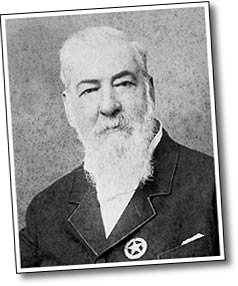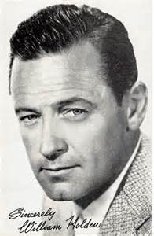Mississippi (/ˌmɪsəˈsɪpi/ ⓘ MISS-ə-SIH-pee) is a state in the Southeastern region of the United States. It borders Tennessee to the north, Alabama to the east, the Gulf of Mexico to the south, Louisiana to the southwest, and Arkansas to the northwest. Mississippi's western boundary is largely defined by the Mississippi River, or its historical course. Mississippi is the 32nd largest by area and 35th-most populous of the 50 U.S. states and has the lowest per-capita income. Jackson is both the state's capital and largest city. Greater Jackson is the state's most populous metropolitan area, with a population of 591,978 in 2020.
The state's history traces back to around 10,000 BC with the arrival of Paleo-Indians, evolving through periods marked by the development of agricultural societies, rise of the Mound Builders, and flourishing of the Mississippian culture. European exploration began with the Spanish in the 16th century, followed by French colonization in the 17th century. Mississippi's strategic location along the Mississippi River made it a site of significant economic and strategic importance, especially during the era of cotton plantation agriculture, which led to its wealth pre-Civil War, but entrenched slavery and racial segregation. On December 10, 1817, Mississippi became the 20th state admitted to the Union. By 1860, Mississippi was the nation's top cotton-producing state and slaves accounted for 55% of the state population. Mississippi declared its secession from the Union on January 9, 1861, and was one of the seven original Confederate States, which constituted the largest slave holding states in the nation. Following the Civil War, it was restored to the Union on February 23, 1870. Mississippi's political and social landscape was dramatically shaped by the Civil War, Reconstruction era, and civil rights movement, with the state playing a pivotal role in the struggle for civil rights. From the end of the Civil War to the 1960s, Mississippi was dominated by socially conservative and segregationist Democrats dedicated to upholding white supremacy.
Despite progress, Mississippi continues to grapple with challenges related to health, education, and economic development, often ranking low in national metrics for wealth, health care quality, and educational attainment. Economically, it relies on agriculture, manufacturing, and an increasing focus on tourism, highlighted by its casinos and historical sites. Mississippi produces more than half of the country's farm-raised catfish, and is a top producer of sweet potatoes, cotton and pulpwood. Others include advanced manufacturing, utilities, transportation, and health services. Mississippi is almost entirely within the east Gulf Coastal Plain, and generally consists of lowland plains and low hills. The northwest remainder of the state consists of the Mississippi Delta. Mississippi's highest point is Woodall Mountain at 807 feet above sea level adjacent to the Cumberland Plateau; the lowest is the Gulf of Mexico. Mississippi has a humid subtropical climate classification.
Mississippi is known for its deep religious roots, which play a central role in its residents' lives. Mississippi ranks among the highest of U.S. states in religiosity. Mississippi's governance structure is based on the traditional separation of powers, with political trends showing a strong alignment with conservative values. Mississippi boasts a rich cultural heritage, especially in music, being the birthplace of the blues and contributing significantly to the development of the music of the United States as a whole.
Etymology
The state's name is derived from the Mississippi River, which flows along and defines its western boundary. European-American settlers named it after the Ojibwe word ᒥᓯ-ᓰᐱ misi-ziibi (English: great river).
Statehood to Civil War
Mississippi became the 20th state on December 10, 1817. David Holmes was the first governor. The state was still occupied as ancestral land by several Native American tribes, including Choctaw, Natchez, Houma, Creek, and Chickasaw.
Plantations were developed primarily along the major rivers, where the waterfront provided access to the major transportation routes. This is also where early towns developed, linked by the steamboats that carried commercial products and crops to markets. The remainder of Native American ancestral land remained largely undeveloped but was sold through treaties until 1826, when the Choctaws and Chickasaws refused to sell more land. The combination of the Mississippi state legislature's abolition of Choctaw Tribal Government in 1829, President Andrew Jackson's Indian Removal Act and the Treaty of Dancing Rabbit Creek of 1830, the Choctaw were effectively forced to sell their land and were transported to Oklahoma Territory. The forced migration of the Choctaw, together with other southeastern tribes removed as a result of the Act, became known as the Trail of Tears.
When cotton was king during the 1850s, Mississippi plantation owners—especially those of the Delta and Black Belt central regions—became wealthy due to the high fertility of the soil, the high price of cotton on the international market, and free labor gained through their holding enslaved African Americans. They used some of their profits to buy more cotton land and more slaves. The planters' dependence on hundreds of thousands of slaves for labor and the severe wealth imbalances among whites, played strong roles both in state politics and in planters' support for secession. Mississippi was a slave society, with the economy dependent on slavery. The state was thinly settled, with population concentrated in the riverfront areas and towns.
^Downtown Jackson the capital and largest city by population
^Gulfport is the second largest city
If you want to read a whole lot more, go here: https://en.wikipedia.org/wiki/Mississippi
- SERVES
- 6
- COOK TIME
- 45 Min
With no need to pre-cook noodles, this No Fuss Lasagna is our kind of easy family dinner! We love how the creamy cheese, extra tomato sauce, and added spices melt together to create each perfectly flavorful bite. And since it's a meaty lasagna, we can serve it on its own with a small salad and be completely satisfied!
- 1 pound lean ground beef
- 1/4 teaspoon salt
- 1/4 teaspoon cayenne pepper
- 1 (28-ounce) jar spaghetti sauce
- 1 (14.5-ounce) can Italian-style diced tomatoes
- 1 (10-ounce) package frozen spinach, thawed and well drained
- 1 (15-ounce) container ricotta cheese
- 1/4 cup grated Parmesan cheese
- 1 egg, beaten
- 10 uncooked lasagna noodles
- 1 1/2 cup (6 ounces) shredded mozzarella cheese, divided
- Preheat oven to 375º. Coat a 9- x 13-inch baking dish with cooking spray.
- In a large skillet, cook ground beef over medium heat 8 to 10 minutes, or until browned. Drain off excess liquid. Add salt, pepper, spaghetti sauce, and tomatoes; stir until well blended, then set aside.
- In a medium-sized bowl, combine spinach, ricotta and Parmesan cheeses, and egg; mix well. Spread 2 cups of sauce mixture over bottom of prepared baking dish.
- Press 4 noodles lengthwise over sauce and 1 noodle crosswise across end of baking dish, completely covering sauce mixture. Spread ricotta mixture evenly over noodles, then sprinkle with 1 cup mozzarella cheese. Top with 1-1/2 cups of sauce mixture, then arrange remaining noodles over sauce, pressing lightly into sauce. Spread remaining sauce over top.
- Bake 45 minutes, or until noodles are tender. Remove from oven and sprinkle with remaining 1/2 cup mozzarella; cover with aluminum foil. Let sit 15 minutes, then cut and serve.
Each year on April 17th, National Ellis Island Family History Day encourages families to explore their ancestry and discover family who immigrated through Ellis Island.
From 1892 to 1924, Ellis Island served as the busiest inspection station for millions of immigrants to the United States. On this day in 1907, officials recorded 11,747 names passing through Ellis Island. It was the busiest day of immigration in the station’s history. During all of 1907, officials processed over one million immigrants through Ellis Island.
During its operation, approximately 12 million immigrants passed through the halls of Ellis Island. It operated from 1892 to 1954. Before Ellis Island, immigrants entered the United States in New York City at Castle Garden. Just months before Ellis Island’s opening, the old depot was demolished and ushered in a new era of immigration. The Statue of Liberty overlooks Ellis Island and was one of the first sights the nearly 2,000 immigrants a day would see as they disembarked.
The new facilities offered an improvement over the Castle Garden. The large, open, and airy facility presented an overwhelming obstacle to some, though. Thousands of people from many cultures and speaking different languages gathered in one place. After such a long journey, the arrival at Ellis Island must have been stressful and confusing. What an overwhelming and exciting experience for them all! For some, they entered Ellis Island as a step toward their future. Officials turned others away for a variety of reasons.
HOW TO OBSERVE
Do you have a family member who immigrated through Ellis Island? Explore your ancestry and follow your ancestors’ footsteps. Discover the history behind your family’s name or learn about their experiences as they traveled to a new land. Many documents reveal glimpses into their lives and their reasons for immigrating.
Through its website, ellisisland.org, you explore the histories of famous immigrants. You can also search passenger lists and follow the clues to your family’s past. While you research, take a virtual tour or learn genealogy basics. Learn about these 7 Notable Ellis Island Immigrants and as you celebrate your day, be sure to share your experience, too.
NATIONAL ELLIS ISLAND FAMILY HISTORY DAY HISTORY
On April 17, 2001, National Ellis Island Family History Day commemorated the busiest inspection station in the United States by launching digital access to its records. This project placed Ellis Island documents at the descendants’ fingertips for the first time. Millions of families could finally retrace their ancestors’ footsteps in a way they had never been able to do before. Governors across the United States officially declared the observance to be celebrated on April 17th, annually.




.svg.jpg)

.jpg)







